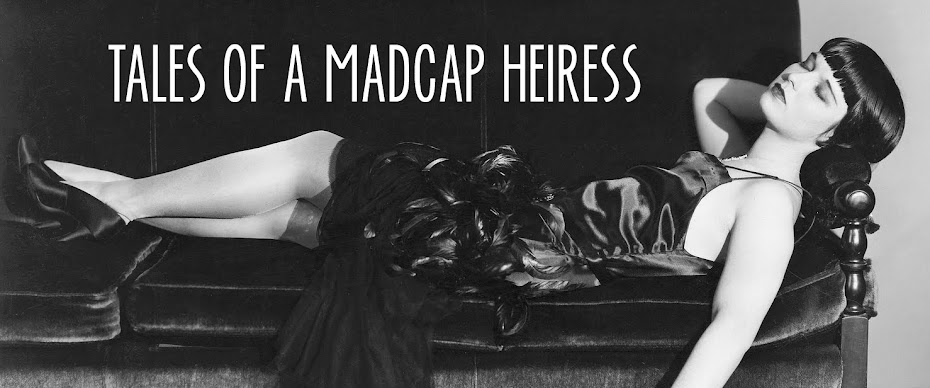Today
marks the 100th anniversary of Ingrid Bergman’s birth. Born on
August 29, 1915 in Stockholm, Sweden, Bergman was orphaned by the age of 12. She later said of herself, “I
was the shyest human ever invented, but I had a lion inside me that wouldn't shut
up!" Interested in acting from a young age, she won a
coveted spot at Stockholm’s Royal Dramatic Theater School but left after a year
to take a chance with the movies.
Her
first on-screen speaking role came in 1935 when she played a maid in Gustaf
Molander’s Munkbrogreyen. A year
later she made Intermezzo with
Molander. Her performance, as a piano teacher who has an affair with a famed
violinist, caught the eye of producer David O. Selznick who brought Bergman to America
to make an English-language remake of the film.
Bergman
was like a breath of fresh air in Hollywood. Refusing to submit herself to the
makeovers most new actresses went through, she said no to changing her name, plucking her eyebrows, capping her teeth, or losing weight. She shunned make-up and high fashion
off screen and indulged in her favourite discovery, American ice cream.
Ingrid Bergman and Humphrey Bogart in Casablanca (1942)
Bergman’s
dedication to her craft won her the admiration of her peers—Selznick said, “Miss Bergman is the most completely conscientious actress with
whom I have ever worked.”—while her natural beauty and talent won over American film audiences. She would go on to star in some of the top films of the 1940s
including Casablanca (1942),
For Whom the Bells Toll
(1942), and Gaslight (1944), for which she won the first
of three Oscars. She also made two films with Hitchcock at this time,
Spellbound (1945) and Notorious (1946), my personal favourite. Bergman’s wholesome image, which was cultivated by the studio publicity machine, was cemented in
the public’s mind when she played a nun in The Bells of Saint Mary (1945).
In
her private life Bergman, who was married to Dr.
Petter Lindström and
had a daughter, Pia, conducted extramarital affairs including one with photographer
Robert Capa. But it was her involvement with Italian director Roberto Rossellini
that would change her career and life. Having seen a couple of his films, Bergman wrote a letter to Rossellini that said, "If you need a Swedish actress who speaks English very well, who has not forgotten her German, who is not very understandable in French and who in Italian knows Ti Amo, I am ready to come and make a film with you." She travelled to
Italy to make Stromboli (1950) with him. During the filming the two fell in love and Bergman became pregnant. When the news broke
the public turned on her, and she was even denounced on the floor of the US Senate.
Ingrid Bergman and Roberto Rossellini with their children at their home in Rome. Photo by Chim (1956)
After
divorcing Lindström, Bergman and Rossellini
were married in 1950. In addition to their son, they would have twin daughters, Isabella and Isotta Ingrid. Bergman
continued working with Rossellini, making five more films together, but their marriage didn’t
last and they divorced in 1957. Bergman would later marry Swedish theatrical producer Lars Schmidt (they remained married for 17 years until their divorce in 1975).
In
1956 Bergman returned to American screens in Anastasia playing the part of Anna, the woman suffering from amnesia who may or may not be the Russian Grand Duchess Anastasia. The film was a hit, and she won her second Oscar. Bergman's Hollywood exile was officially over when she appeared at the
1959 Academy Awards and received a standing ovation from the audience.
Bergman
would continue to act in both films and on stage, winning a third Oscar in 1974
for best supporting actress for Murder on
the Orient Express. In
1978 she made Autumn Sonata with the acclaimed director Ingmar Bergman. It
was to be her last film. In 1982 she played her final role—Israeli Prime Minister Golda Meir
in a television miniseries. She passed away later that year on her
birthday.
Ingrid Bergman. Photo by Richard Avedon (1961)
Ingrid Bergman's centennial is being celebrated in a variety of ways. Her image was chosen for the official Cannes Film Festival poster, there is a new documentary, Ingrid Bergman: In Her Own Words, and a book Ingrid Bergman: A Life in Pictures. Here in New
York, MoMA is screening a selection of her films August 29-September 10, with
many of them being introduced by her children (for more information, visit
here). Over in Brooklyn, BAM is presenting a selection of her films September 13-29
and on September 12, Isabella Rossellini and Jeremy Irons will give a
theatrical tribute to Bergman (for more information, visit here).








